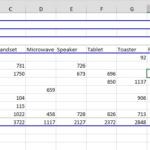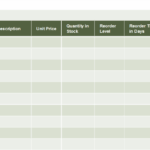Survival Analysis in Excel
Survival analysis is a statistical technique used to analyze the time until an event of interest occurs.
While Excel may not have dedicated survival analysis functions, you can perform basic survival analysis by using its features. Below is a guide on how to conduct survival analysis in Excel:
Data Preparation
Organize your data in Excel with columns for event times (time to an event or failure) and event indicators (1 if the event occurred, 0 if it did not). Include any relevant covariates (independent variables).
Calculate Survival Function
Calculate the survival function, denoted as S(t), which represents the probability of surviving beyond time t. You can use Excel’s functions to compute survival probabilities based on your data. For example:
=PRODUCT(1-$B$2:$B$100*(A2>A$2:A$100))
Drag this formula down to calculate survival probabilities for different time points.
Create Kaplan-Meier Survival Curves
Visualize your survival data by creating Kaplan-Meier survival curves. Plot time on the x-axis and S(t) on the y-axis using Excel’s charting tools.
Perform Log-Rank Test
For comparing survival curves between groups, you can approximate the log-rank test process in Excel by manually calculating the observed minus expected events and using this to assess group differences. While Excel doesn’t have a built-in log-rank test function, you can:
- Compute the sum of observed events and the sum of expected events for each group.
- Determine the variance for the difference between observed and expected events.
- Calculate the log-rank test statistic as the square of the difference between observed and expected events, divided by the variance.
This process requires careful data arrangement and manual calculations, highlighting Excel’s limitations for conducting sophisticated statistical tests like the log-rank test directly.
Cox Proportional-Hazards Model (Optional)
Applying the Cox Proportional-Hazards Model in Excel is challenging due to the lack of direct support for regression models that handle time-to-event data. However, for a basic understanding or preliminary analysis:
- You may use regression tools in Excel for preliminary analyses, keeping in mind the assumptions and limitations of not directly modeling time-to-event data.
- Detailed hazard ratio calculations, typically part of the Cox model analysis, would need simplifications or approximations when attempted in Excel.



